





Okay, quick story time.
In 1999, Salesforce was launched and quickly gained recognition for its cloud-based CRM solutions and unique approach to software delivery. It wasn’t until the late 2000s that they started developing a genuine content-based strategy. This included formats like blog posts, instructive guides, white papers, and webinars.
This strategic shift played a significant role in cementing their position as a leader in CRM and cloud computing.
Contents:
Salesforce would go on to complement their content strategy with their annual Dreamforce conference, featuring seminars, workshops, and keynote speeches from industry leaders. Over the years, the event has become a content generation machine, providing a focal point for their audience. This, in turn, generates additional assets for engagement and outreach.
Salesforce isn’t the only example, of course. Hubspot, Adobe, and many other B2B companies have made content a key pillar of their marketing strategy.
A survey from the Content Marketing Institute shows that 88% of marketers have successfully reached their goals of creating brand awareness and building credibility through content.
Source: Content Marketing Institute
At its core, brand awareness refers to the level of familiarity that consumers have with a particular brand. This is measured by how well consumers can recognise the brand's logo, name, products, and other offerings.
However, true brand awareness means a prospect understands your brand's character, values, and offerings.
When considering new software, companies are more likely to choose a brand they recognise and associate with quality and reliability. The effect of familiarity makes brand awareness a critical first step in any content strategy.
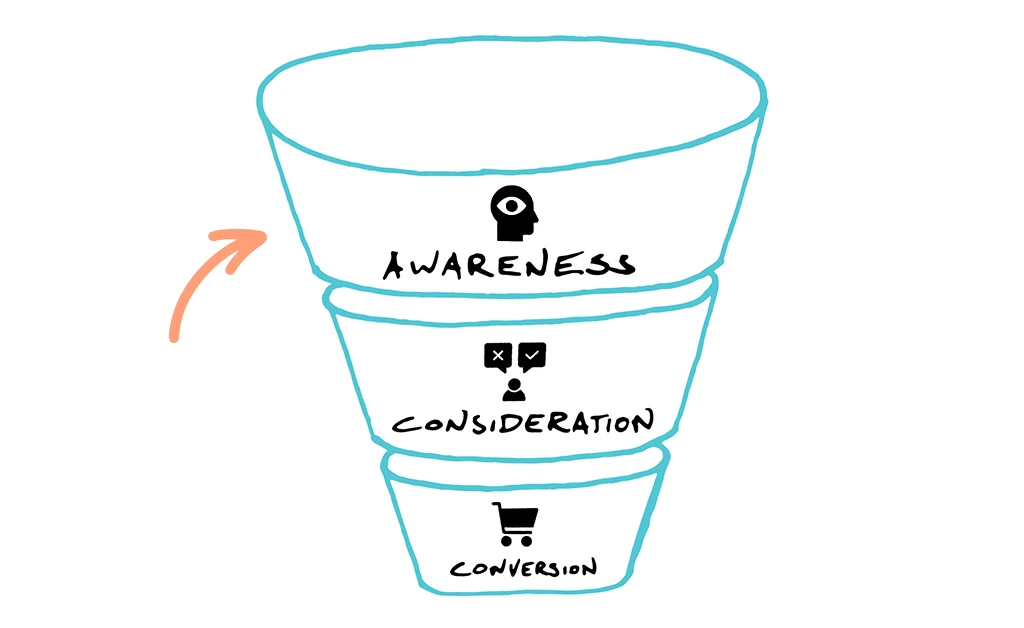
Brand awareness sits at the top of the marketing funnel. It's the initial phase where a business makes its first impression. This is where brands catch the eye of potential customers and begin to build a relationship. Think of a prospect scrolling through social media and pausing momentarily at a brand's post offering a potential solution to their needs; this is the start of the ‘awareness’ phase.
As potential customers move from awareness to consideration, they might start to shortlist their preferred options. This is even more likely when it comes to bigger purchases that require sign-off from multiple stakeholders within a company. Brands that build greater awareness are more likely to be considered because stakeholders feel more confident to give sign-off. For example, a business needing a cloud storage solution is more likely to consider a brand that’s shown relevant expertise in an article they’ve seen online, rather than a complete unknown.
Finally, in the conversion (aka purchase) phase, familiarity and trust built through consistent brand awareness can strongly influence consumer decisions. It's the reason why businesses will often end up choosing a brand they've already engaged with through other channels. For example, they might have previously viewed a webinar, online workshop, or downloaded a product guide.
In short, by including value-adding content as part of marketing strategies, brands can inform, educate and remain top-of-mind, paving the way for consideration and, ultimately, conversion.
Learn how TMP can help you build a successful B2B marketing strategy.
Brand awareness goes beyond recognition, of course. It offers both tangible and intangible benefits that can profoundly influence business outcomes, particularly in the B2B sector.
Content stands out as one of the most cost-effective methods for generating brand awareness, particularly when compared to traditional marketing channels. It's estimated that content marketing costs 62% less than traditional marketing and generates about three times as many leads.
Why’s that? For starters, paid ads are interruptive. Whether it’s a TV commercial during your favourite show or a sponsored post in your Instagram feed, ads get in the way of the content that audiences are actively trying to engage with. Yes, they serve to increase brand awareness. And yes, sometimes they’re funny or informative to some degree, but ultimately they’re obstacles that quickly become annoying and repetitive. This means audiences are more likely to tune them out, or in some cases, even resent certain brands for their incessant ads.
In contrast, content marketing aims to build positive brand association by creating content of value. While the purpose of traditional ads is to ‘sell’ you something in a short space of time, content marketing is a slower burn. But the content gives audiences a reason to seek it out, rather than something that gets in the way. Maybe it’s a seminar featuring knowledgeable speakers from the industry. If you sell a certain product, you could produce a how-to guide for optimising its use. It could be as simple as an informative blog post or step-by-step video.
If you can resist the urge to default to the ‘hard sell’ approach in this content, all the better. When you ‘bait-and-switch’ with content that purports to be useful and then serve users a thinly veiled ad, this undermines any trust you’re trying to build and people will quickly disengage. If you can serve a need for your audience by creating content that’s shareable and actually provides value in terms of the challenges they’re trying to solve, the brand recognition will come.
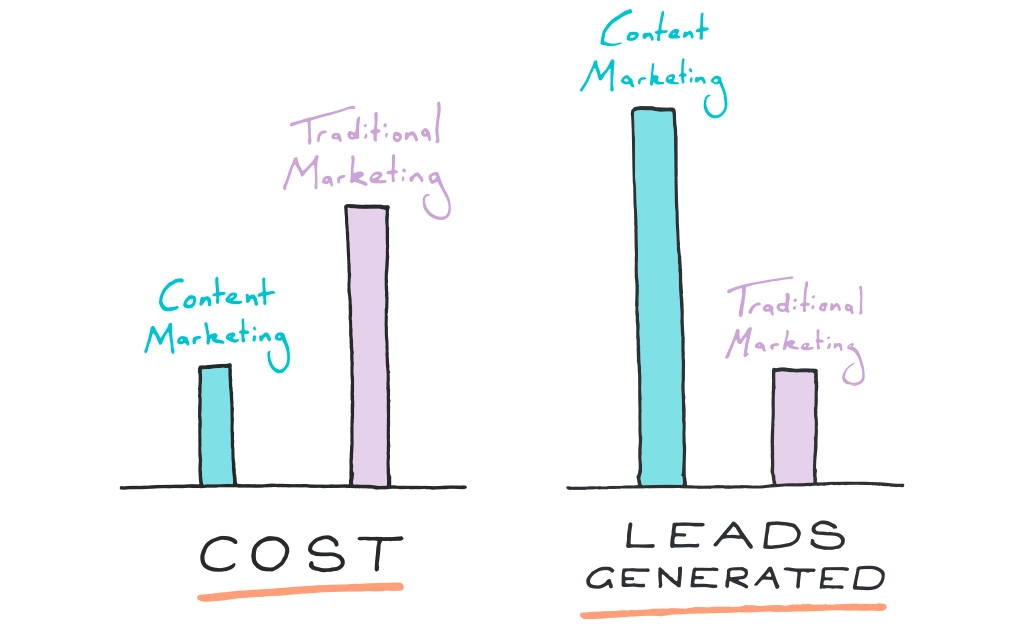
Unlike traditional advertising, which often requires significant investment for media space or airtime, branded content can be housed on company-owned channels at no cost. Creating digital content is generally less expensive than producing content for traditional media outlets like TV or radio, where production costs are significantly higher.
It’s worth considering the lifespan of useful content too. Once published, content can continue to engage and attract audiences over time, unlike a paid ad that stops generating returns as soon as the campaign ends. For example, a well-written blog post or whitepaper can continue to draw traffic and generate leads for years after its initial publication, offering an ongoing return on investment.
A single piece of content can also be repurposed across multiple channels, such as social media, email newsletters and so on, maximising its reach without additional cost.
Content marketing also supports SEO. Search engines favour high-quality content, which can improve a website’s ranking and visibility without the ongoing costs of pay-per-click (PPC) advertising.
Customers are much more likely to deal with brands who know what they’re talking about. Publishing insightful articles, industry reports, and expert commentary can establish your brand as a thought leader while addressing the needs and challenges of the target audience.
Salesforce and Canva are good at this. By regularly producing and sharing in-depth analyses, trends, and innovations in CRM and cloud computing, they showcase their deep industry knowledge and build their reputation as an authority in their respective sectors.
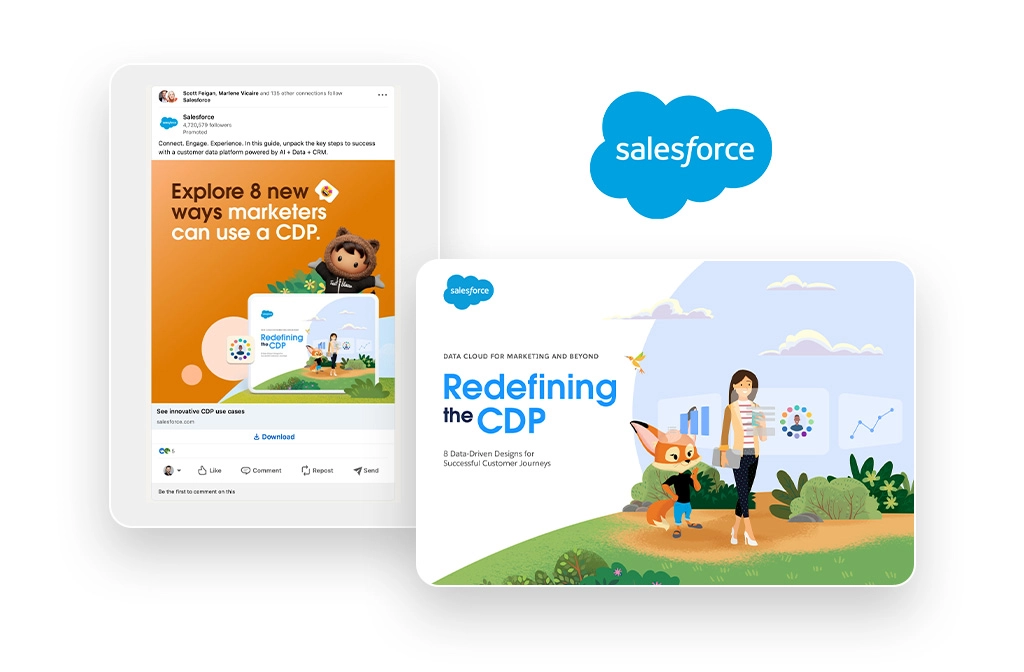
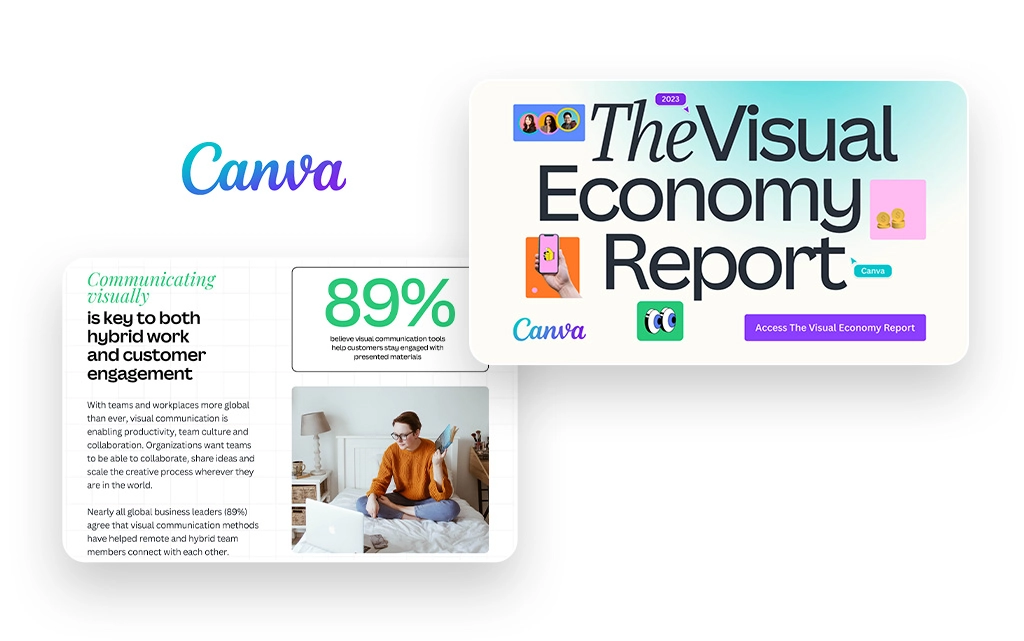
Sure, ‘storytelling’ can sound a little pretentious in a marketing context. But really all it means is using a narrative framework that resonates with the audience. We all prefer having things explained using real-world examples. Show, don’t tell – as they say. This can help create an emotional connection and make content more relatable.
SEO-driven content focuses on creating material that ranks well on search engines, enhancing brand discoverability for those seeking related information or solutions. By targeting specific keywords and addressing relevant topics, companies can attract organic traffic, thereby increasing brand visibility and authority. To learn more about how to effectively research content topics, check out our guide on content topic research.
Social media engagement is about actively interacting with audiences on various platforms (doing this yourself or with the help of your B2B marketing agency), sharing timely content, responding to queries, and fostering a community. This approach helps humanise a brand and keeps it top-of-mind.
Providing educational and how-to content positions a brand as helpful and knowledgeable in its field. This type of content often addresses common questions or challenges faced by the audience, establishing your brand as a go-to resource.
Case studies and client stories are a powerful tool to demonstrate how a brand's services or products can solve real business problems, which adds credibility to the company image.
Deloitte showcases its expertise and problem-solving capabilities through effective written and video case studies which include project insights and demonstrable client results.
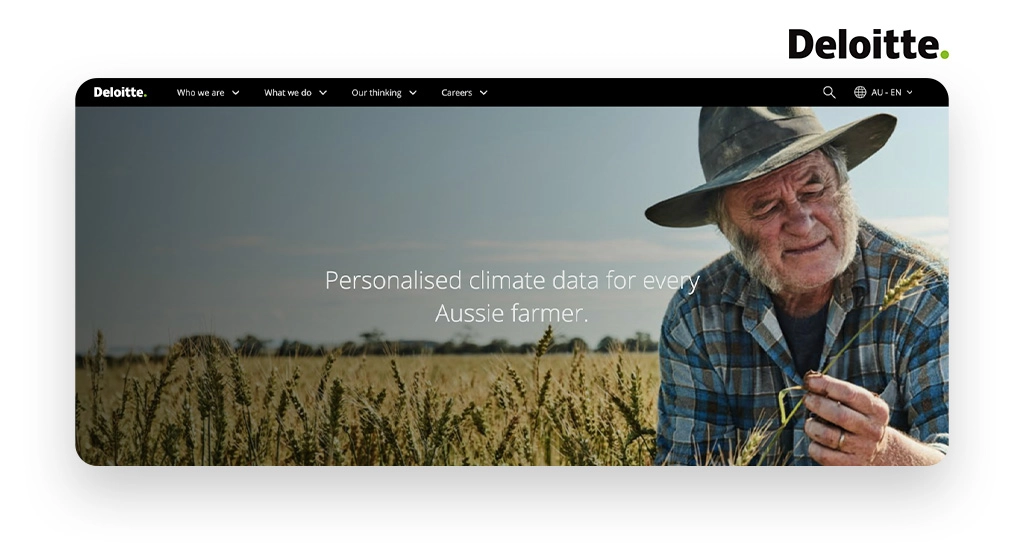
Marketers can develop user-generated content to create a sense of community and authenticity around the brand, as potential customers see real stories and experiences rather than just brand-driven narratives.
By encouraging travellers to share their Australian journey using specific hashtags, Tourism Australia leverages the power of user-generated content. The real stories and visuals, shared on Tourism Australia's platforms, serve as genuine, relatable endorsements that seamlessly leverage customers as brand advocates.
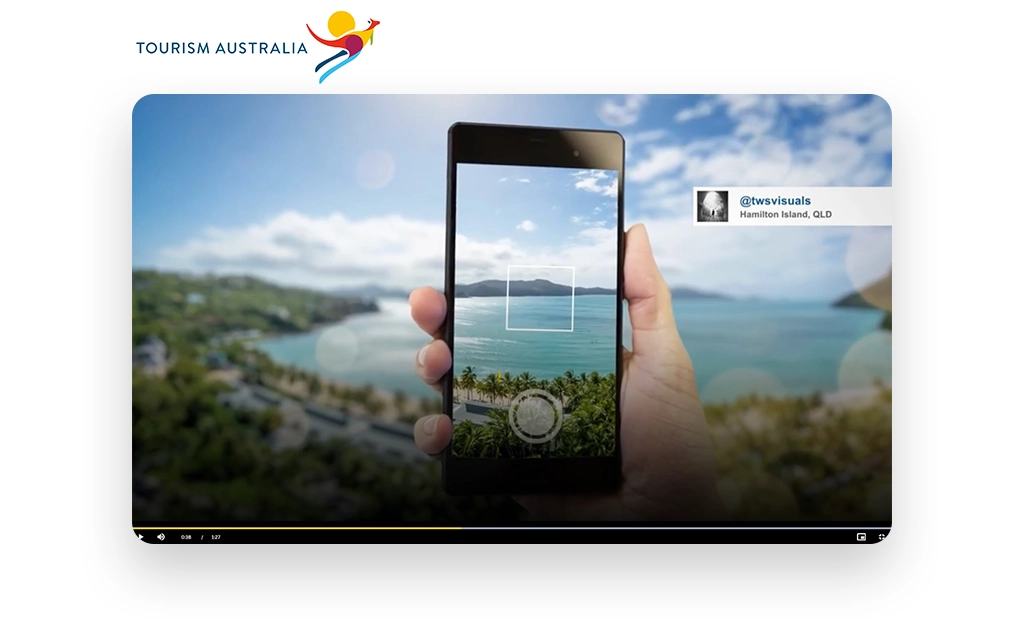
The significance of content’s ongoing role in nurturing leads is clear. With prospects’ behaviour increasingly influenced by the quality and relevance of the content they interact with, B2B companies must recognise that investing in content is a viable path to growth.
The brands that stay on top of these trends, while adapting and innovating their content strategies, will be the ones to secure higher brand visibility and loyalty in the years to come.
This requires an approach to developing content that’s strategic, engaging, aware of the opportunities offered by the latest technologies and aligned with the evolving preferences of their target audience.

Let's talk!